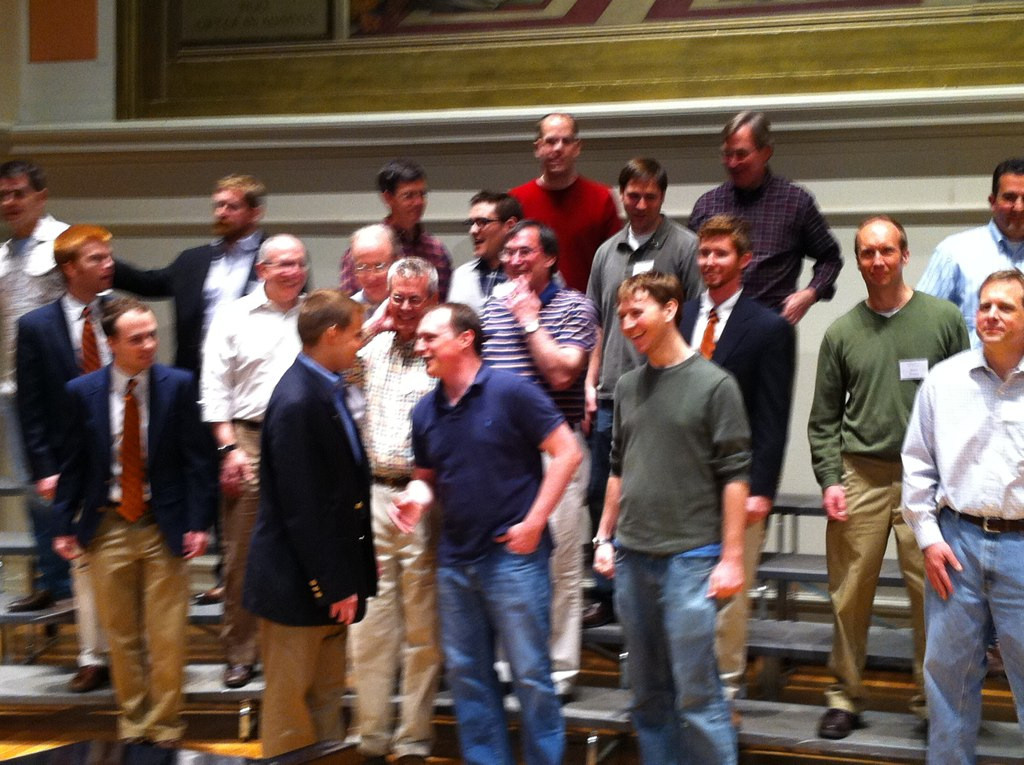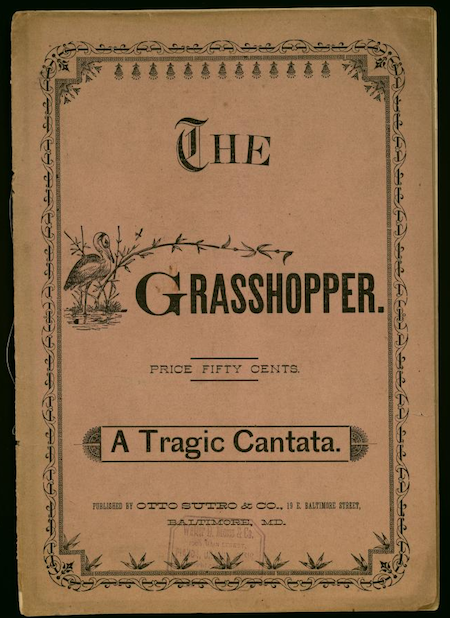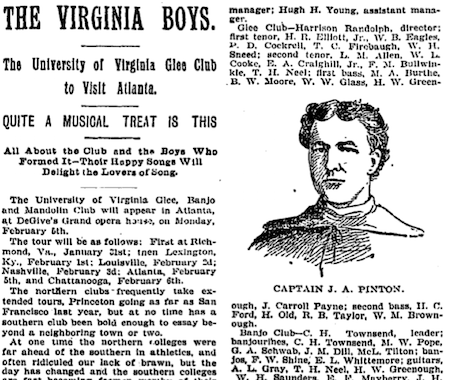To do that, I’m including a short excerpt from a book I’ve been writing off and on on the history of the Glee Club. I’d love any feedback on the content below. The question I tried to answer was: given the Club’s spotty history for the first 20 years of its existence, why did it come roaring back in the late 1880s and early 1890s, going from virtual quiescence to mounting extensive tours? Here’s an excerpt that gives some of the background.
That the Glee Club’s early history should be bound to the Grounds of the University is unsurprising, if one considers both the fragile civil life and convalescing infrastructure of post-Reconstruction Virginia. That just 22 years after its founding it would be touring major Southern cities in four states staggers the mind until one thinks about one aspect of that badly injured infrastructure: the railroad.
Prior to the Civil War, the railroad did not enjoy the same rise to prominence in the South as in the North. In Virginia particularly, the spread of the railroad was hampered by the political power of the planters, who were suspicious of transportation initiatives that did not directly help get their goods to market faster, and of the elite in Richmond, who, starting with George Washington, had championed river transportation for goods, with an eye to keeping commerce in Virginia ports rather than sending it down the Mississippi to the port of New Orleans (under Spanish control until the Louisiana Purchase). In this spirit, the canal building enterprise that created the still-visible Chesapeake and Ohio Canal between Georgetown and Cumberland, MD and the James River and Kanawha Canal in Richmond sought to create water links from major plantations to ports. When railroads first started to be built in a significant way in Virginia, they were likewise viewed as ways to market for the planters; there was no vision of a network of rails that could assist with transit of goods over land and across state lines, much less comparable carriage of passengers.
After the Civil War, this began to change. The railroad company eventually known as the Chesapeake and Ohio bought smaller rail companies and began to connect the lines to out of state networks, beginning in the Reconstruction years. Following Reconstruction, the C&O was purchased by Northern rail barons and expanded still further.
And passenger trains became more widely available. In 1885, the Charlottesville Union Station, a passenger depot serving the C&O, the Virginia Midland Railway, and the Charlottesville and Rapidan Railroad opened on West Main Street in Charlottesville, where it still sits (serving Amtrak) today. Before this point, distance travel relied on horse power; afterwards, students could – and did – ride the rails.
So it was that the Glee Clubs of 1889–90, 1891–92 and 1892–93 mounted their first performances outside Charlottesville – albeit in the relatively close-to-hand locales of Staunton, Norfolk, Richmond and Petersburg. As we have seen, the Glee Club of 1889–90 had held a concert in the Public Hall in the Rotunda Annex, on April 11, 1890, and followed it that same weekend with performances in Lynchburg and Staunton. Two years later the Glee Club returned to the Public Hall on December 17, 1891, with a program that featured song in less than half the performance’s 15 numbers, the balance being devoted to banjo, guitar and mandolin works; the following night found them in Staunton, and a performance in Norfolk followed on April 20. The 1892–93 Club broadened its horizons still further, with a performance in “town” in the Levy Opera House in January, and a three city tour with appearances in the Richmond Theatre, the Norfolk Opera House, and the Academy of Music in Petersburg in February.…
After 1892–93, the group decided to travel much more ambitiously. Led by Bernard W. Moore and with help from a few graduating alumni, including George Ainslie, the group mounted its first major tour outside the state of Virginia. The 1894 Corks and Curls dramatically illustrates the growth of the group’s accomplishments, with the modest touring of 1891 through 1893 together taking up less than the space allotted to 1894.
Even before the tour proper, the Glee Club held performances in the Levy Opera House and the Staunton Opera House in mid-January 1894. The tour proper kicked off with a performance in Fayerweather Gymnasium on Tuesday, January 30, and was off to the Mozart Academy in Richmond the next day. Thursday saw the group in the Lexington (Kentucky) Opera House, and they continued in Kentucky with an engagement in the Louisville Masonic Temple on Friday. Saturday was the Grand Opera House in Nashville. The group took a day off for travel (and the Sabbath) but performed in DeGive’s Grand Opera House in Atlanta on Monday, February 5. Turning north again, they were in Chattanooga’s New Opera House Tuesday to conclude the tour on February 6. A performance in the Lynchburg Opera House on March 29 concluded the season.
How was such an elaborate and lengthy tour possible? Again, the railroad not only facilitated but was the only conceivable way to travel the miles from state to state so rapidly. Here the group had the assistance of the general passenger agent of the Chesapeake and Ohio Railroad, John D. Potts. Apparently having no UVa connection, Potts nevertheless worked closely with the group through the 1890s, to the point of being named business manager of the group in 1895–96.



